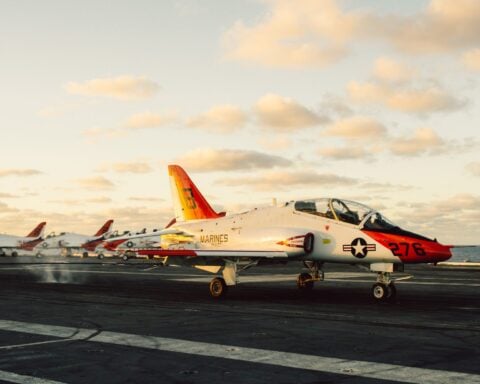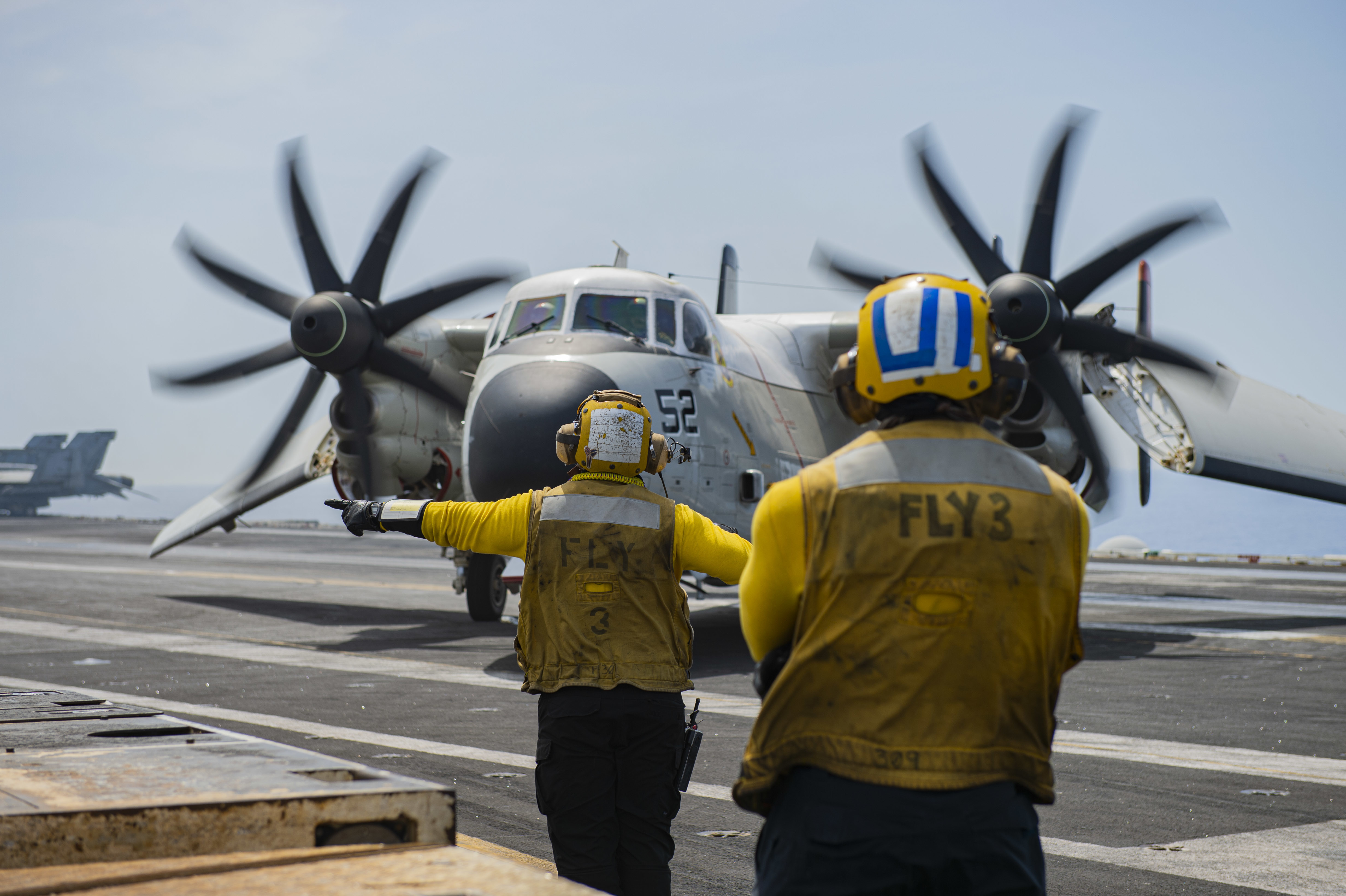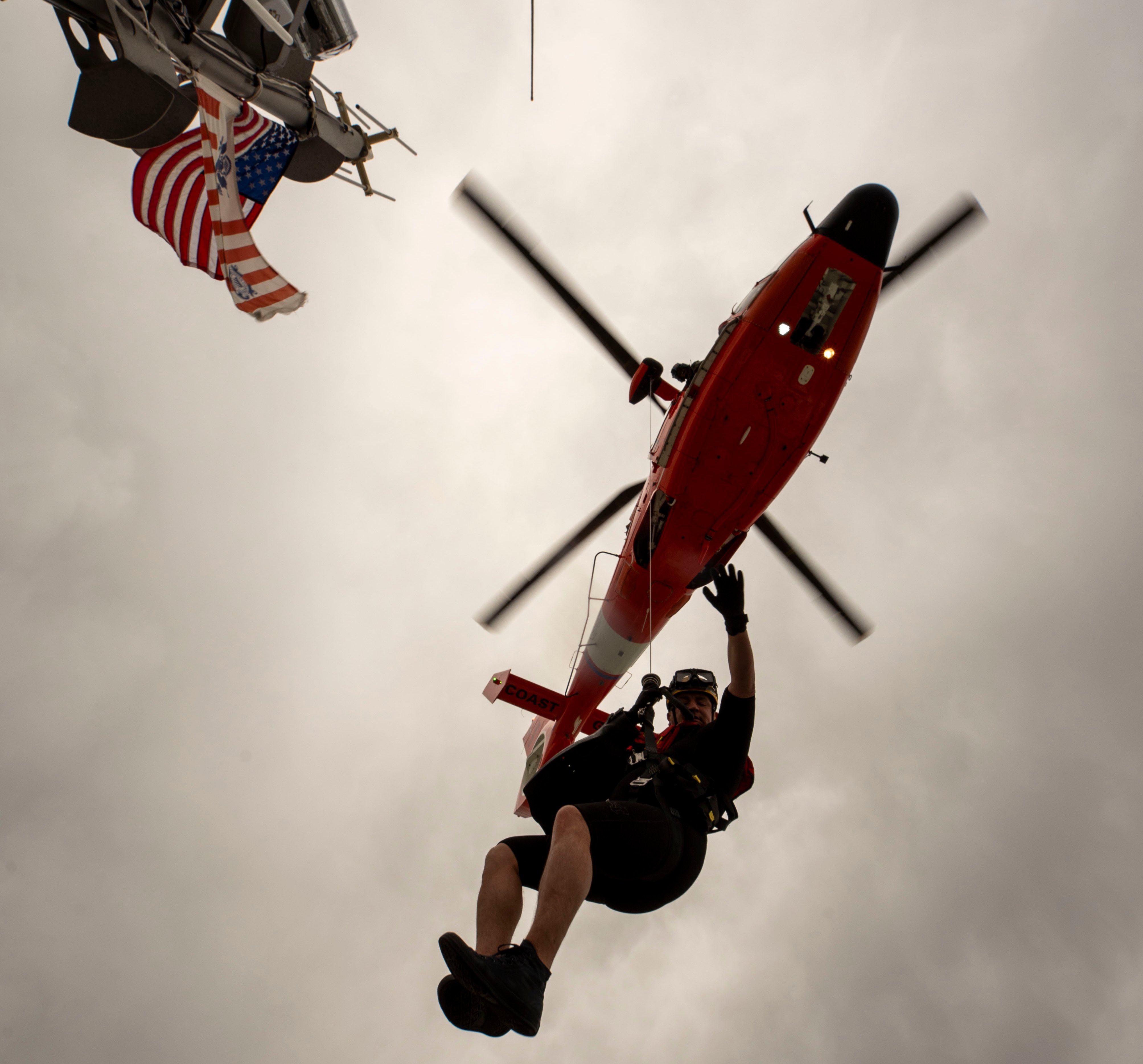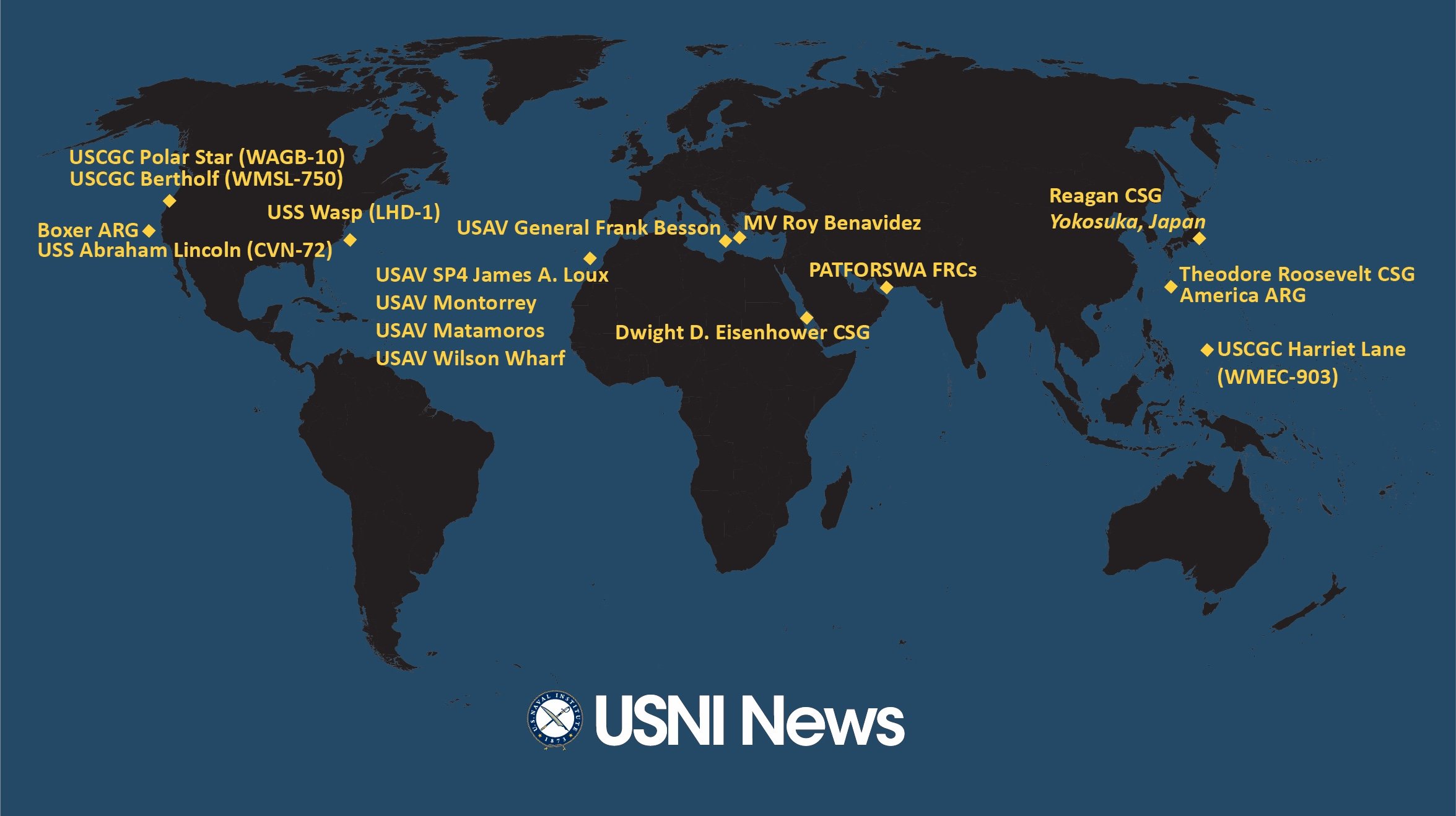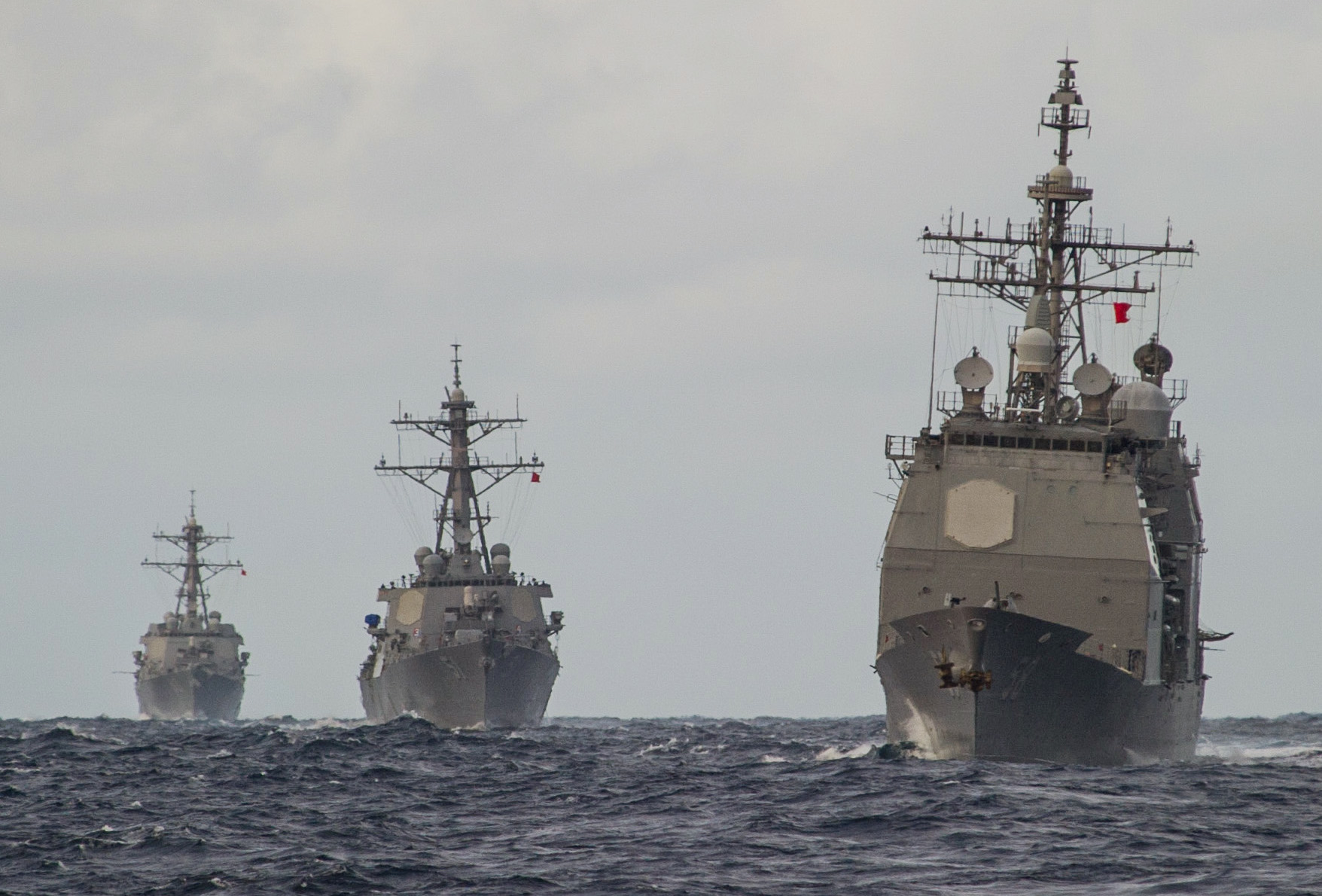
The Navy preserved development of future combat power over the next five years in its Fiscal Year 2015 $148 billion budget submission to Congress released in briefing at the Pentagon on Tuesday.
The procurement documents — released on Tuesday — emphasize weapon systems over the Future Years Defense Plan (FYDP) that will fit into future Navy constructs, like the Naval Integrated Fire Control-Counter Air—or NIFC-CA (pronounced: nif-kah) designed to prosecute high-end air wars in the 2020s as well as next generation surface ship weapons.
The request is split between $45 billion for military personnel, $38.4 billion for ships, aircraft, weapons and Marine Corps gear, $16.3 billion in research and development, and $46.8 billion in operations and maintenance funding, Rear Adm. William Lescher, deputy assistant secretary of the Navy for budget during the Tuesday briefing at the Pentagon.
The budget preserves construction and development of attack submarines and large surface combatants along with a search for a more lethal small surface combatant to follow the now 32 planned Littoral Combat Ship (LCS) as part of its $14.4 billion shipbuilding budget.
The Navy will continue to purchase Virginia class attack submarines (SSN-774) at the rate of two per year for $5.8 billion in FY 15 as well as $2.8 billion for two Arleigh Burke guided missile destroyers (DDG-51). The Navy will begin to procure the Flight III variant of the DDG-51s starting in FY 2016 equipped with the Air and Missile Defense Radar (AMDR).
The Navy will also purchase an additional Afloat Forward Staging Base (AFSB) variant of the Mobile Landing Platform in FY 2017. The service also plans to start its next generation fleet oiler (T-AO(X)) in FY 2016.
Navy aircraft program have been truncated. The Navy will slow down the procurement of Lockheed Martin F-35C Joint Strike Fighter to only two planes FY 15 budget and buy a total of only 36 of the stealthy new jets through FY 19. In the FY14 budget proposal, the Navy had hoped to purchase 69 of the jets.
Meanwhile, there is no additional funding in over the five-year defense plan to buy additional Boeing F/A-18E/F Super Hornets or EA-18G Growlers. But the Navy will continue to produce the NIFC-CA critical Northrop Grumman E-2D Advanced Hawkeye through FY 19 for a total of 25 aircraft.
The Navy will restart production of the Mk-48 heavyweight torpedo and buy the Defense Advanced Research Projects Agency’s Long Range Anti-Ship Missile (LRASM) as part of its efforts to fight a war at sea against a technologically advanced foe.
“I highlight consistent with QDR [Quadrennial Defense Review] guidance to rebalance for a broad spectrum of conflict, this budget funds key capabilities, such as restart under Mk-48 heavyweight torpedo line with procurement starting in FY 2016 and procurement of the [LRASM], starting in FY 2017,” Lescher said.
U.S. nuclear-powered attack and ballistic missile submarines use the Mk-48 to attack enemy surface warships and submarines. Likewise, LRASM, which is derived from the Lockheed Martin AGM-158B Joint Air-to-Surface Standoff Missile-Extended Range (JASSM-ER) cruise missile, fills the Navy’s requirement for an Offensive Anti-Surface Warfare Increment 1 missile to replace the Harpoon anti-ship missile.
Meanwhile, the FY 2015 will mark the last year the Navy will buy the Raytheon RGM/UGM-109E Tactical Tomahawk. The Navy will sustain the Tomahawk missile while it starts developing a new weapon called the Next Generation Land Attack Weapon, Lescher said. “An R&D line is starting in FY 2015. Again, so that’s kind of managing that transition from the Tomahawk going to sustainment and to the initial R&D on that,” he said.
The Navy is also preserving purchases the Raytheon SM-6 Standard missile, which plays an integral role under the service’s NIFC-CA construct. Other ship self-defense missiles such as the Rolling Airframe Missile and Evolved Sea Sparrow Missile are also moving full steam ahead.
Meanwhile, the Navy is taking a one-year break from producing the new Raytheon AIM-120D AMRAAM air-to-air while the Navy awaits operational testing to be competed, but service will buy 799 missiles through FY 2019.
At the same time, the Navy will also purchase 995 Raytheon AIM-9X Sidewinder missiles through FY 2019. It will also continue to pursue the development of the longer-ranged Block III variant of the weapons.
The Navy is will also continue the procurement of AGM-88E Advanced Anti-Radiation Guided Missile, which is designed to suppress advanced enemy air defenses, through FY 2019. The Navy hopes to purchase 1,264 of the missiles through FY 2019.
The Raytheon AGM-154 Joint Standoff Weapon will cease production after 400 more rounds in 2016.
However, the Navy start buying Raytheon GBU-53/B Small Diameter Bomb II in FY 2017 with a projected buy of 1,590 weapons through FY 2019.
Additionally, the Navy will continue to invest in the Joint Air-to-Ground Missile, which the service hopes to start buying in 2019.
The service had previously announced that it would wait until next year’s budget to decide if it would decide if it would decommission USS George Washington (CVN-73).

